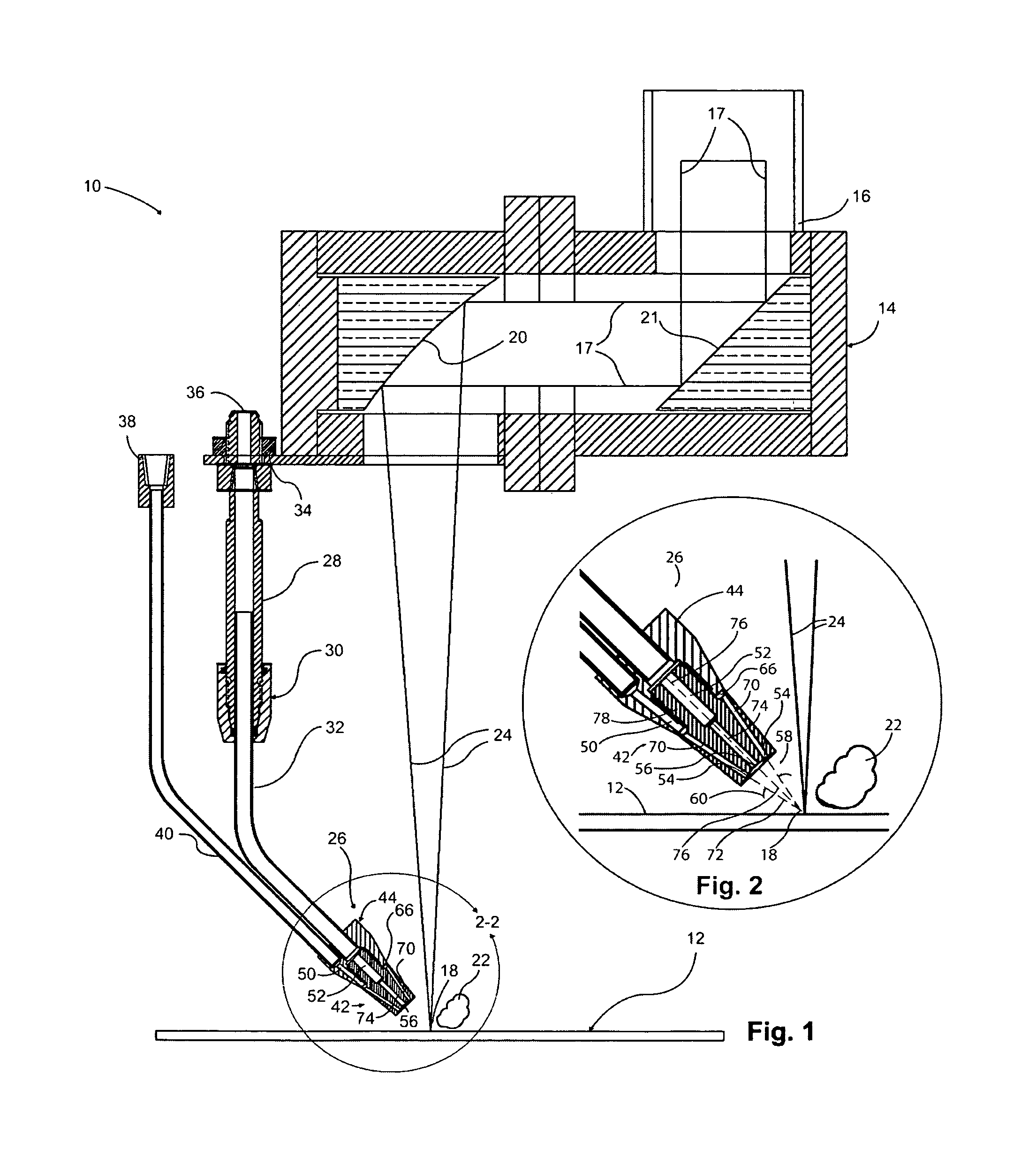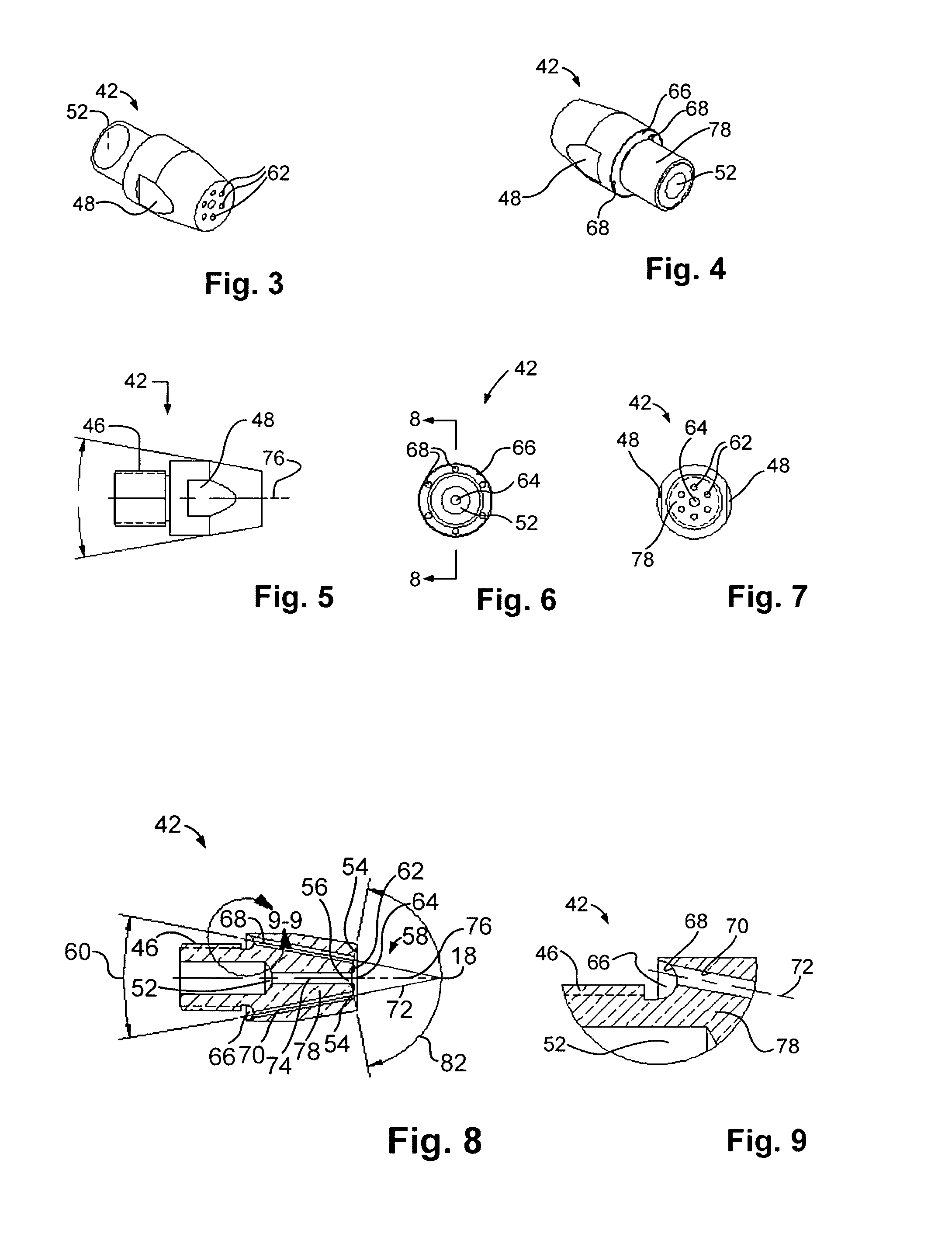Method & apparatus for laser welding with mixed gas plasma suppression
a plasma suppression and laser welding technology, applied in welding apparatus, metal-working equipment, manufacturing tools, etc., can solve the problems of loss of penetration, unstable plasma, and simple substitution of processing steps and materials, so as to enhance weld penetration, improve plasma suppression, and improve plasma suppression
- Summary
- Abstract
- Description
- Claims
- Application Information
AI Technical Summary
Benefits of technology
Problems solved by technology
Method used
Image
Examples
example
[0072]The gas economy and weld penetration improvements enabled by Applicant's invention have been demonstrated in actual laser welding of mild carbon steel, as well as stainless steel. As marked, the metallographic sample of carbon steel depicted in FIG. 14 reflects a weld penetration depth of 9.8018 mm with Applicant's externally mixed plasma suppression gases CO, at 10 SCFH plus Argon at 20 SCFH supplied to a dual gas nozzle (FIG. 1) of the present invention. By comparison, FIG. 15 shows a weld penetration into carbon steel of 9.102 mm (marked) using helium alone at a flow rate of 60 SCFH supplied through tube 32, that is, without use of Applicant's dual gas delivery system. A power of 6.0 kW and 1.0 meter per minute feed rate were set in each case. This translates to an improvement of 8% in weld penetration, by practice of the Applicant's invention. It was generally observed in welding mild carbon steel that Helium at 50 to 60 SCFH can be replaced by CO2 at 5 to 10 SCFH plus Arg...
PUM
| Property | Measurement | Unit |
|---|---|---|
| Angle | aaaaa | aaaaa |
| Angle | aaaaa | aaaaa |
| Angle | aaaaa | aaaaa |
Abstract
Description
Claims
Application Information
 Login to View More
Login to View More - R&D
- Intellectual Property
- Life Sciences
- Materials
- Tech Scout
- Unparalleled Data Quality
- Higher Quality Content
- 60% Fewer Hallucinations
Browse by: Latest US Patents, China's latest patents, Technical Efficacy Thesaurus, Application Domain, Technology Topic, Popular Technical Reports.
© 2025 PatSnap. All rights reserved.Legal|Privacy policy|Modern Slavery Act Transparency Statement|Sitemap|About US| Contact US: help@patsnap.com



